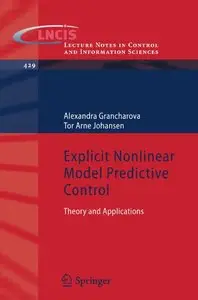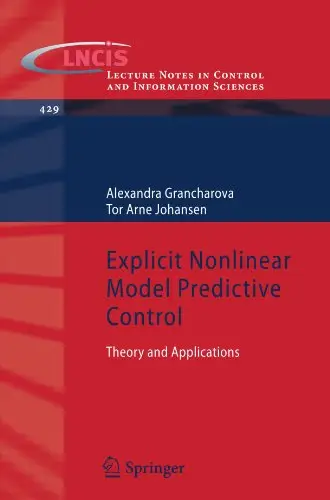Alexandra Grancharova and Tor Arne Johansen, "Explicit Nonlinear Model Predictive Control: Theory and Applications"
English | ISBN: 3642287794 | 2012 | 248 pages | PDF | 7 MB
English | ISBN: 3642287794 | 2012 | 248 pages | PDF | 7 MB
Nonlinear Model Predictive Control (NMPC) has become the accepted methodology to solve complex control problems related to process industries. The main motivation behind explicit NMPC is that an explicit state feedback law avoids the need for executing a numerical optimization algorithm in real time. The benefits of an explicit solution, in addition to the efficient on-line computations, include also verifiability of the implementation and the possibility to design embedded control systems with low software and hardware complexity.
This book considers the multi-parametric Nonlinear Programming (mp-NLP) approaches to explicit approximate NMPC of constrained nonlinear systems, developed by the authors, as well as their applications to various NMPC problem formulations and several case studies. The following types of nonlinear systems are considered, resulting in different NMPC problem formulations:
Ø Nonlinear systems described by first-principles models and nonlinear systems described by black-box models;
- Nonlinear systems with continuous control inputs and nonlinear systems with quantized control inputs;
- Nonlinear systems without uncertainty and nonlinear systems with uncertainties (polyhedral description of uncertainty and stochastic description of uncertainty);
- Nonlinear systems, consisting of interconnected nonlinear sub-systems.
The proposed mp-NLP approaches are illustrated with applications to several case studies, which are taken from diverse areas such as automotive mechatronics, compressor control, combustion plant control, reactor control, pH maintaining system control, cart and spring system control, and diving computers.



